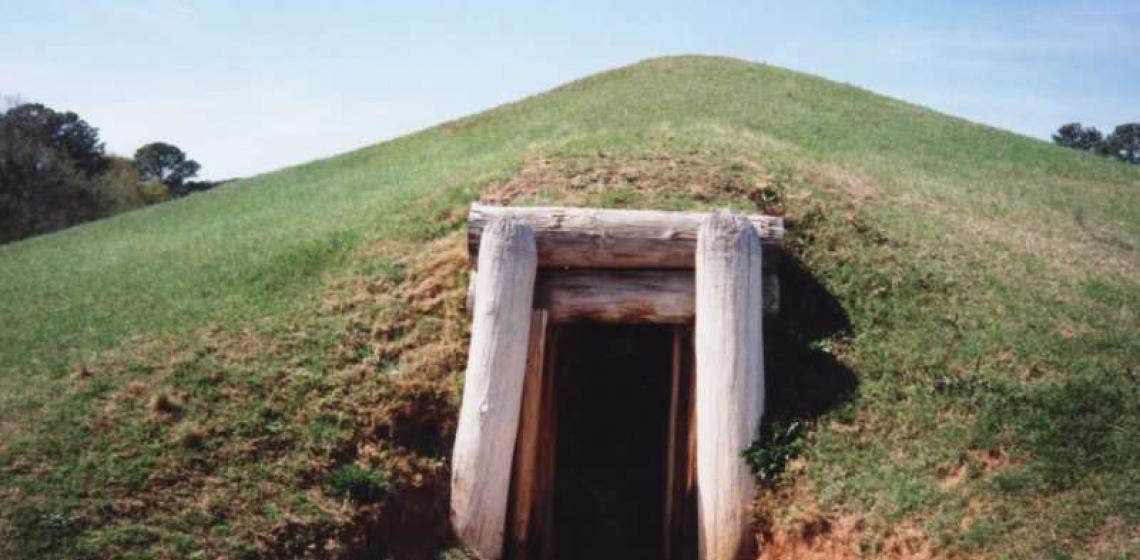
Welcome to Ocmulgee National Monument this park is a memorial to the relationship of people and natural resources. Native Americans first came here during the Paleo-Indian period hunting Ice Age mammals. Different cultures occupied this land for thousands of years. The Mississippian culture arrived here around 900 constructing mounds for their elite. Today the mounds still remain for all to see.
Ocmulgee National Monument preserves traces of over ten millennia of Southeastern Native American culture, including major earthworks built more than 1,000 years ago by the South Appalachian Mississippian culture (a regional variation of the Mississippian culture.)[4] These include the Great Temple and other ceremonial mounds, a burial mound, and defensive trenches. They represented highly skilled engineering techniques and soil knowledge, and the organization of many laborers. The site has evidence of "17,000 years of continuous human habitation."[5] The 702-acre (2.84 km2) park is located on the east bank of the Ocmulgee River. Present-day Macon, Georgia developed around the site after the United States built Fort Benjamin Hawkins nearby in 1806.
Varying cultures of prehistoric indigenous peoples settled on what is called the Macon Plateau at the Fall Line, where the rolling hills of the Piedmont met the Atlantic Coastal Plain. The monument designation includes the Lamar Mounds and Village Site, located downriver about three miles (5 km) from Macon. The monument park was designated for federal protection by the National Park Service (NPS) in 1934 and listed on the National Register of Historic Places in 1966. In 1997, the NPS designated the monument a Traditional Cultural Property, the first so recognized east of the Mississippi River.
While the mounds had been studied by some travelers, professional excavation under the evolving techniques of archeology did not begin until the 1930s, under the administration of President Franklin D. Roosevelt during the Great Depression. The Works Progress Administration (WPA) sponsored large-scale archaeological digs at the site between 1933 and 1942. Workers excavated portions of eight mounds, finding an array of significant archeological artifacts that revealed a wide trading network and complex, sophisticated culture.
